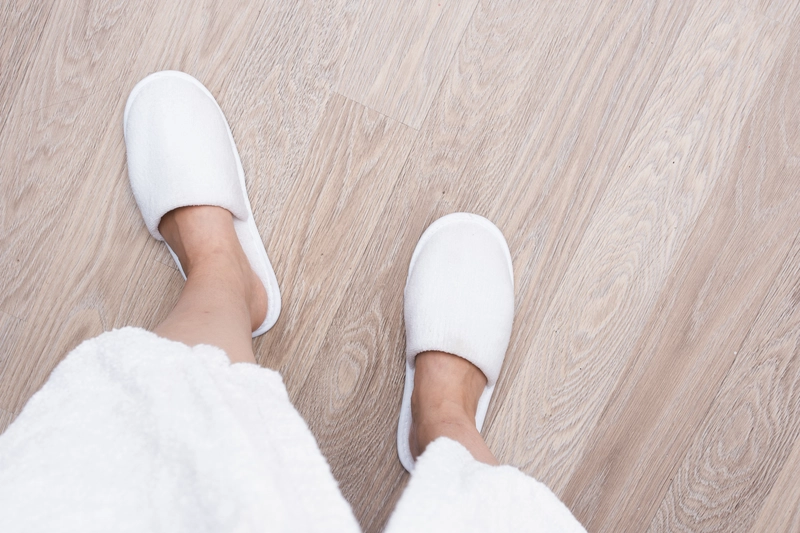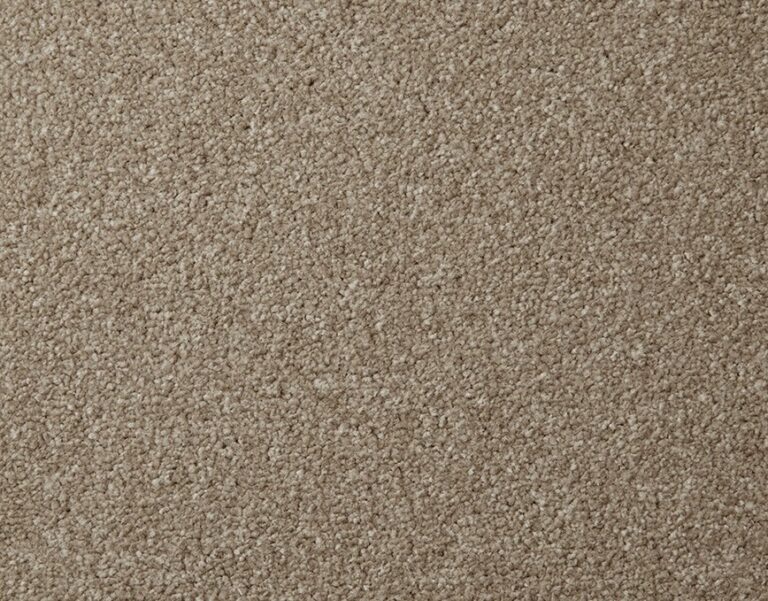Experiencing a bouncy feeling when walking on your laminate floor? You’re not alone. We explore the common reasons why laminate floor flexes when walked on, how to determine the severity of the issue, and most importantly, how to fix it.
From addressing underlying issues to using floor levelling compounds, we cover all the steps needed to repair and prevent laminate floor flexing in the future. Let’s make your floors solid and stable once again!
Common Reasons Why Laminate Flooring Flexes
If you’ve noticed that your laminate floor flexes when walked on, several factors could be responsible for this issue, including improper installation, an uneven subfloor, or issues with the underlay and overall stability of the flooring.
a. Incorrect Installation
Incorrect installation of laminate flooring can lead to issues such as flexing or bouncing, particularly if the laminate boards are not properly acclimatised or if the expansion gap is not correctly measured.
One common mistake people make during installation is failing to leave a sufficient expansion gap around the perimeter of the room. This gap is crucial to accommodate the natural swelling and contracting of the laminate flooring due to changes in temperature and humidity.
Another critical aspect often overlooked is the need to acclimatise the laminate boards to the room’s environment before installation. Skipping this step can lead to buckling or warping of the flooring over time.
While DIY installation may seem cost-effective, hiring a professional ensures that proper measurements are taken, subfloor preparation is adequate, and all manufacturer guidelines are followed to guarantee a successful and long-lasting installation.
b. Uneven Subfloor
An uneven subfloor can cause your laminate flooring to feel bouncy or unstable, as the boards are unable to lay flat and secure on an irregular surface.
When the subfloor is not level, the risk of your laminate flooring developing gaps or even breaking increases significantly. The lack of proper support due to inconsistencies in the subfloor can lead to premature wear and tear on your laminate boards, affecting their overall durability. A subfloor with uneven thickness may result in an uneven installation and compromise the aesthetic appeal of your flooring.
To ensure the stability and longevity of your laminate flooring, it is crucial to properly level the subfloor and check for any dips or bumps that could impact the seamless installation of the boards. A levelled subfloor provides a solid foundation for your laminate flooring to rest upon, enhancing its performance and ensuring a smooth and uniform surface.
c. Poor Quality Laminate
Using low-quality laminate can also result in a springy floor because lower-grade materials lack the necessary thickness and stability to withstand daily wear and tear.
Regarding laminate flooring, the quality of the material plays a crucial role in its overall performance and longevity. High-quality laminate is engineered to be more durable and resistant to damage, making it ideal for high-traffic areas in homes or commercial spaces. Opting for a laminate with sufficient thickness not only enhances its stability but also helps in reducing the sound transmission, providing a quieter environment. By investing in top-quality laminate, you are ensuring a floor that not only looks beautiful but also stands the test of time.
How to Determine the Severity of the Flexing
To determine the severity of the flexing in your laminate flooring, begin with a thorough inspection to identify the extent of the issue and then consider consulting a professional or referring to a laminate care guide for further evaluation.
One of the initial steps in inspecting the flexing is to walk over the affected area and feel for any noticeable movement or shifting beneath your feet. This tactile assessment can give you a sense of the degree of flexibility present in the flooring and help gauge its stability.
Visually inspect the surface for any visible imperfections such as bulging or gaps between the planks. These signs can indicate underlying issues that require attention.
If after your inspection, you find the flexing to be significant or if there are concerning irregularities, it’s advisable to seek assistance from a professional flooring specialist. They can provide a more thorough assessment and recommend appropriate solutions to address the problem effectively. In case you need further guidance on caring for your laminate flooring, consulting a laminate care guide can offer valuable insights and maintenance tips to keep your floors in optimal condition.
How to Fix a Bouncy Laminate Floor
Fixing a bouncy laminate floor involves addressing any underlying issues such as an uneven subfloor or inadequate underlay, and may include solutions like using a floor levelling compound or replacing damaged boards.
a. Address Any Underlying Issues
Before attempting any repairs, it’s crucial to address any underlying issues that may be causing your laminate flooring to flex, such as problems with the underlay or an uneven subfloor that compromises stability.
Issues with the underlay or subfloor can significantly impact the longevity and performance of your laminate flooring. Uneven subfloors can lead to noticeable dips or bumps in the flooring, affecting its overall aesthetics. Similarly, inadequate underlay can cause the planks to move and create a squeaky or unstable surface.
To diagnose these problems, you may need to inspect the subfloor for any dips, bumps, or moisture damage. Test the underlay’s quality by walking over the flooring to identify any areas that feel spongy or under pressure.
Once identified, solutions like levelling compounds or moisture barriers can be applied to address subfloor issues. For underlay problems, consider adding additional padding or replacing the existing underlay with a higher-quality material to enhance stability.
b. Use a Floor Levelling Compound
Using a floor levelling compound can help to even out an uneven subfloor, providing a more stable base for your laminate flooring and reducing bounce.
Before applying the floor levelling compound, it is crucial to thoroughly clean the subfloor, removing any debris, dust, or grease that might hinder the adhesion.
Once the subfloor is clean and dry, mix the levelling compound according to the manufacturer’s instructions, ensuring a smooth and lump-free consistency.
Pour the compound onto the subfloor, spreading it evenly with a trowel to create a flat surface.
A level subfloor not only enhances the aesthetics of your laminate flooring but also prevents premature wear and tear, ensuring a longer lifespan for your floor.
c. Add Support Beams
Adding support beams beneath the floorboards can significantly enhance the stability of your laminate flooring, particularly in areas where the floor joists are spaced too far apart.
When considering adding support beams, ensure that you measure the distance between floor joists accurately. It’s crucial to select the correct size and type of beams that align with the requirements of your flooring system.
Proper placement of support beams is essential to evenly distribute the weight of the floorboards and prevent sagging. By following manufacturer guidelines and local building codes, you can ensure the beams are installed correctly.
Before installation, inspect the floorboards for any signs of damage or weakened areas that may need reinforcement to guarantee a solid foundation for the support beams.
d. Replace Damaged Boards
Replacing damaged laminate boards is essential for maintaining the stability and appearance of your flooring, as damaged boards can contribute to a bouncy or uneven surface.
Identifying damaged laminate boards typically involves inspecting the flooring for visible signs of wear, such as cracks, warping, or discolouration. Once damaged boards are identified, carefully removing them without causing harm to surrounding pieces is crucial.
Replacing these damaged laminate boards not only improves the aesthetic appeal of the flooring but also enhances its structural integrity, ensuring a level and sturdy surface. By addressing damaged boards promptly, homeowners can prevent further issues, such as water damage or tripping hazards.
How to Repair Flexes in Laminate Floor
Repairing laminate floor flexes when walked on can involve several methods, depending on the severity and location of the issue, with common solutions including using a floor repair kit, applying wood glue, or filling in gaps with wood putty.
1. Utilise a Floor Repair Kit
A floor repair kit can be a convenient and effective way to address minor flexing issues in your laminate floor, providing tools and materials designed specifically for stabilising and fixing the surface.
These kits often come with items like floor adhesive, putty, a syringe for precise application, and sometimes even colour-matching materials to ensure a seamless repair.
One of the key advantages of using a specialised floor repair kit is that it saves you time and money by giving you everything you need in one package, eliminating the need to hunt down individual products or make multiple trips to the store.
2. Apply Wood Glue
Applying wood glue to laminate boards can help to secure loose or flexing sections, enhancing the overall stability of your flooring.
To begin the process of fixing flexing laminate boards with wood glue, start by thoroughly cleaning the area to be repaired. Remove any dirt, dust, or debris that could affect the adhesion of the glue. Then, carefully apply a thin, even layer of wood glue along the edges and underside of the flexing boards using a small paintbrush or applicator. Press the boards firmly into place, ensuring they align correctly. Allow the glue to dry completely according to the manufacturer’s instructions before walking or placing furniture in the repaired area.
3. Fill in Gaps with Wood Putty
Filling in gaps with wood filler can be an effective way to stabilise areas of your laminate floor that are experiencing flexing or movement.
Before applying the wood filler, it’s important to ensure that the gaps are clean and free of debris. You can use a vacuum or a damp cloth to thoroughly clean the area.
Next, choose a wood filler that matches the colour of your laminate floor to achieve a seamless finish. Take a small amount of filler and press it firmly into the gap using a filling knife or your finger. Smooth out the excess filler with a damp cloth to create a flush surface.
How to Prevent Laminate Floor Flexing in the Future
Preventing laminate floor flexing in the future involves ensuring proper installation from the outset, choosing high-quality laminate materials and keeping the subfloor level and stable to provide a solid foundation for the flooring.
1. Ensure Proper Installation
Ensuring proper installation is crucial to prevent future flexing in laminate floors, including correctly measuring the expansion gap and considering professional assistance for precise installation.
One crucial step in the installation process is to acclimatise the laminate flooring to the room’s temperature and humidity for at least 48 hours before installation. This helps prevent warping and ensures a stable installation.
Proper subfloor preparation is key to a successful outcome, including ensuring the subfloor is clean, level, and dry. To facilitate a smooth installation, be sure to leave the required expansion gap around the perimeter of the room to allow the flooring to expand and contract with changes in temperature and humidity.
2. Choose High-Quality Laminate
Choosing high-quality laminate with sufficient thickness is essential for ensuring long-term stability and preventing the floor from becoming bouncy or unstable.
Regarding selecting the best laminate flooring, it is crucial to consider various factors to ensure you are making a wise investment. One key criterion to focus on is the thickness of the laminate. Thick laminate tends to be more durable and resilient to daily wear and tear, making it a preferred choice for high-traffic areas.
Material stability plays a significant role in the overall quality of laminate flooring. Opting for high-quality materials that are resistant to moisture and fluctuations in temperature can contribute to the longevity of your floor.
When shopping for laminate flooring, pay attention to the AC rating, which indicates the durability and suitability of the laminate for different settings. Choosing a laminate with a higher AC rating can ensure its performance in various environments.
3. Keep the Subfloor Level
Maintaining a level subfloor is fundamental to preventing laminate floor flexing, as an even and stable base ensures proper installation and long-term stability.
One of the most effective ways to achieve a level subfloor is by using self-levelling compounds. These compounds are poured onto the subfloor surface and automatically level themselves, creating a smooth and flat foundation for the laminate flooring. Before applying the levelling compound, it’s essential to thoroughly clean the subfloor, remove any protrusions, and fill in any gaps or low spots using appropriate patching compounds.
See product: Quick-Step Largo Natural Varnished Merbau
In conclusion, while laminate flooring flexing when walked on can be a common and frustrating issue, it is not without solutions. Investing in a professional fitting service, like the expert installation provided by TEKA Flooring, ensures that your laminate flooring is installed correctly and securely.
With TEKA Flooring’s fitting service, you can rest assured that every detail is meticulously handled, from subfloor preparation to the final touches, guaranteeing a durable and stable floor that stands the test of time.
Don’t let flexing floors disrupt your home environment. Trust TEKA Flooring to deliver a flawless installation, providing you with the peace of mind and the quality you deserve.
Read also:

































